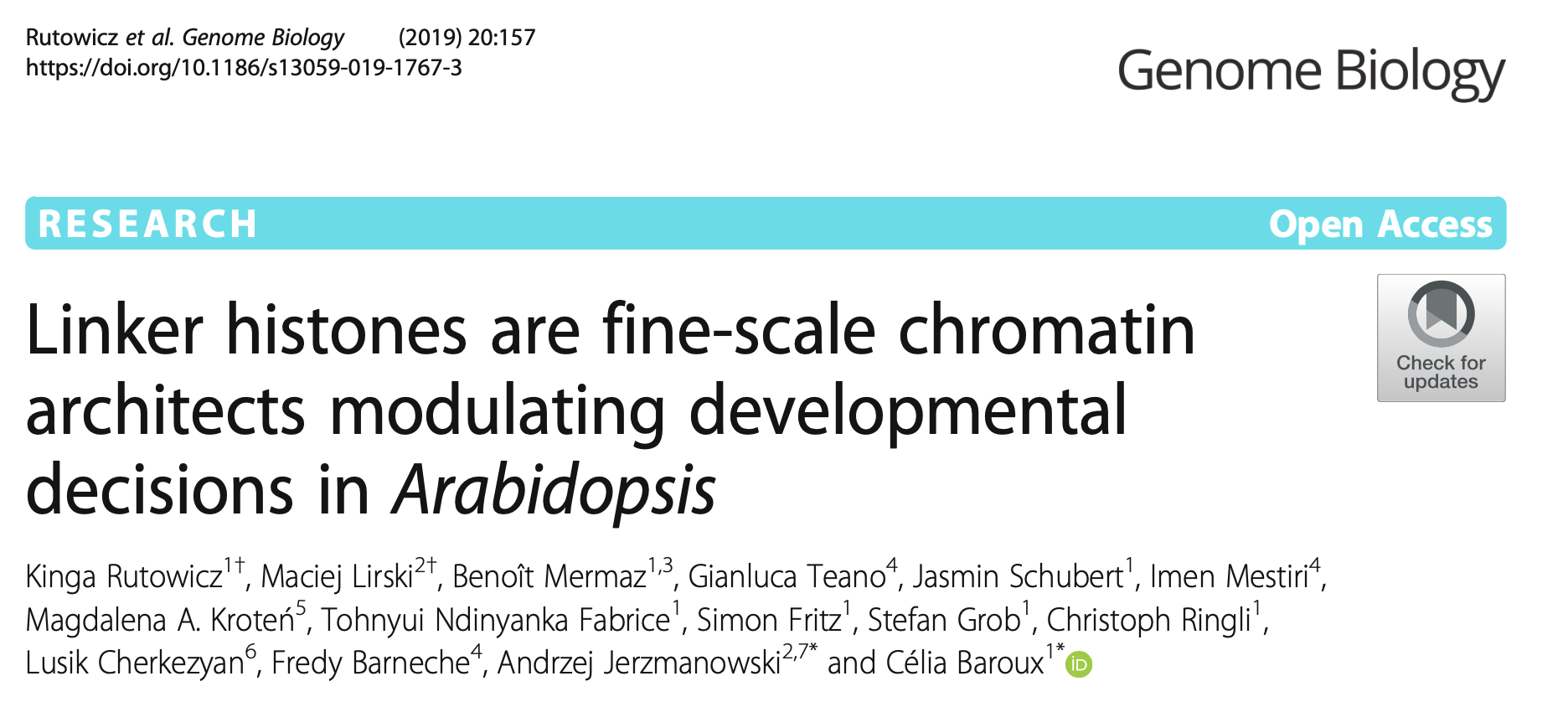Linker histones are fine-scale chromatin architects modulating developmental decisions in Arabidopsis

Host: Pan Kairui
Date: 23 Mar 2022
Abstract:
Background:
Chromatin provides a tunable platform for gene expression control. Besides the well-studied core nucleosome, H1 linker histones are abundant chromatin components with intrinsic potential to influence chromatin function. Well studied in animals, little is known about the evolution of H1 function in other eukaryotic lineages for instance plants. Notably, in the model plant Arabidopsis, while H1 is known to influence heterochromatin and DNA methylation, its contribution to transcription, molecular, and cytological chromatin organization remains elusive.
Results:
We provide a multi-scale functional study of Arabidopsis linker histones. We show that H1-deficient plants are viable yet show phenotypes in seed dormancy, flowering time, lateral root, and stomata formation— complemented by either or both of the major variants. H1 depletion also impairs pluripotent callus formation. Fine- scale chromatin analyses combined with transcriptome and nucleosome profiling reveal distinct roles of H1 on hetero- and euchromatin: H1 is necessary to form heterochromatic domains yet dispensable for silencing of most transposable elements; H1 depletion affects nucleosome density distribution and mobility in euchromatin, spatial arrangement of nanodomains, histone acetylation, and methylation. These drastic changes affect moderately the transcription but reveal a subset of H1-sensitive genes.
Conclusions:
H1 variants have a profound impact on the molecular and spatial (nuclear) chromatin organization in Arabidopsis with distinct roles in euchromatin and heterochromatin and a dual causality on gene expression. Phenotypical analyses further suggest the novel possibility that H1-mediated chromatin organization may contribute to the epigenetic control of developmental and cellular transitions.